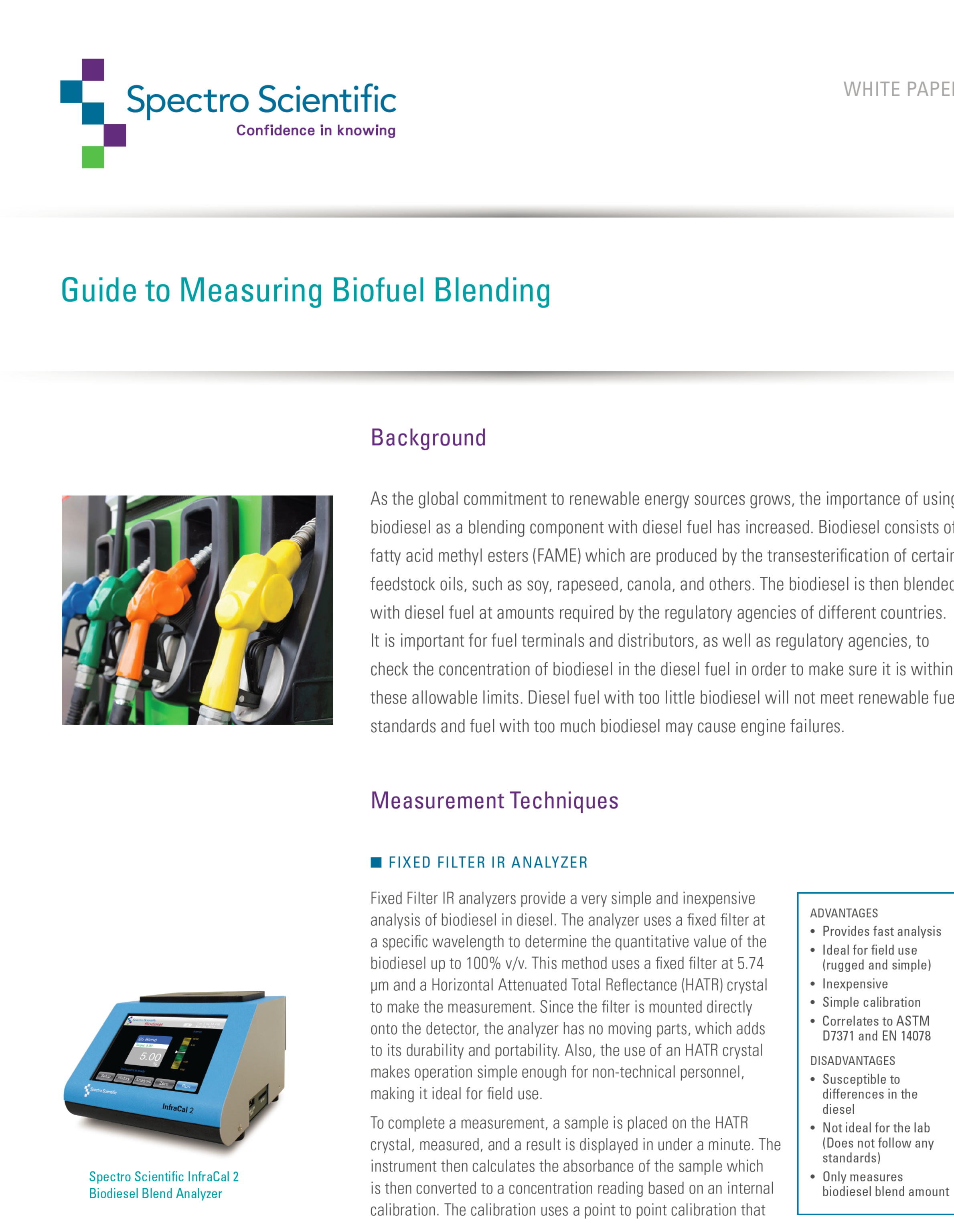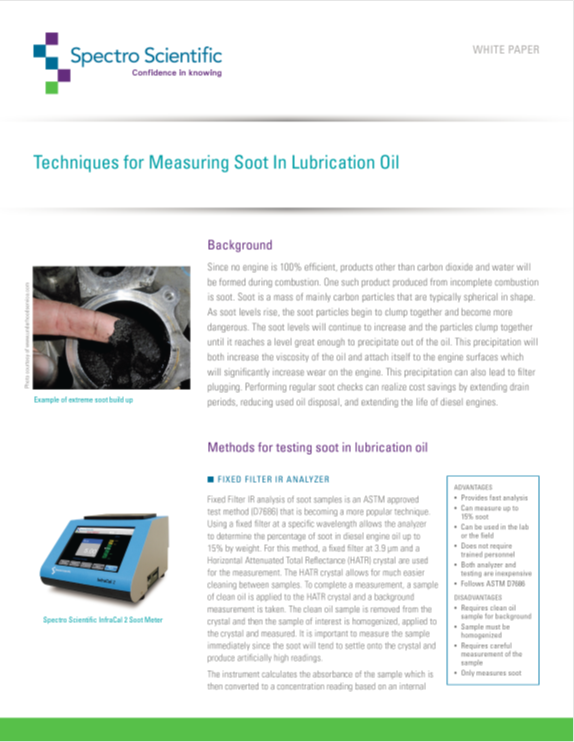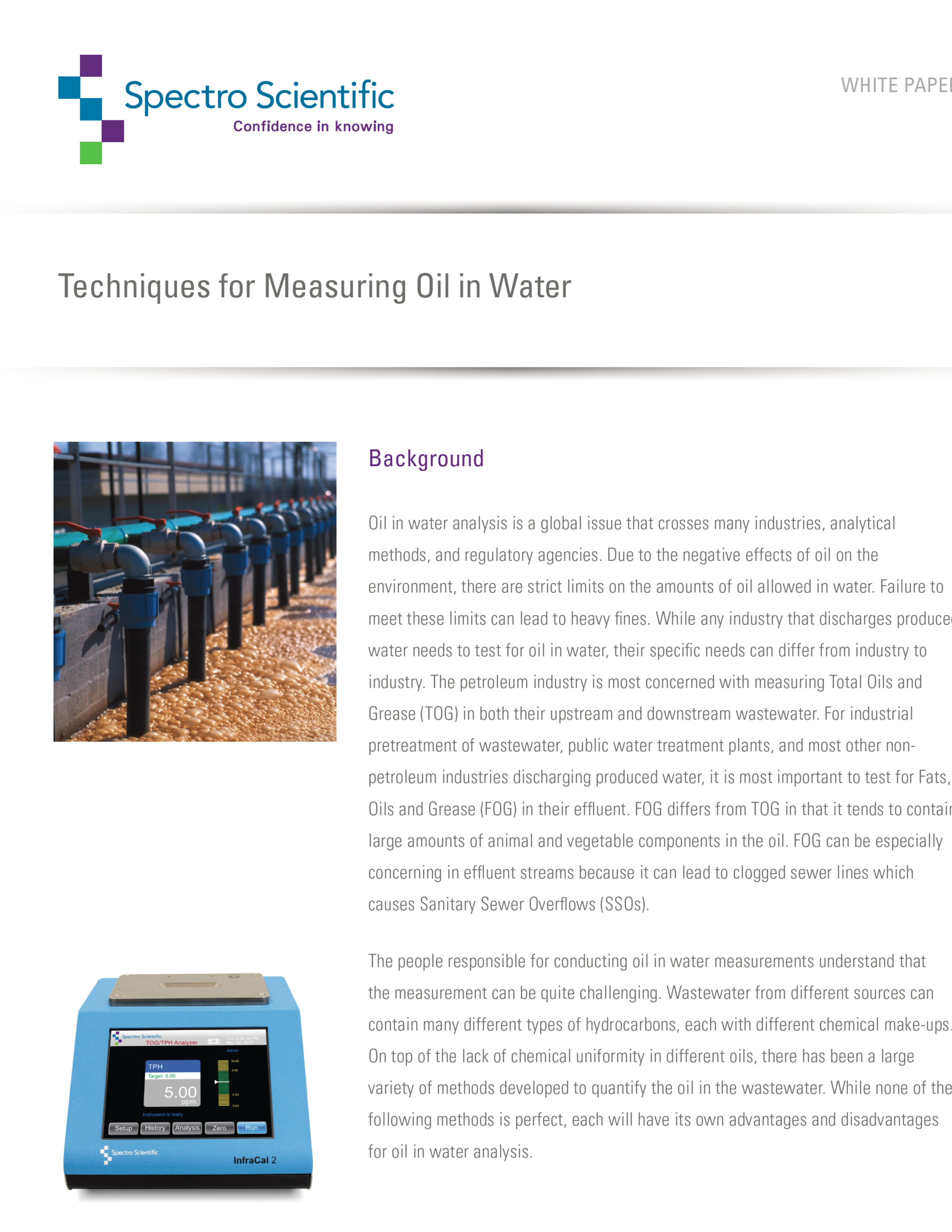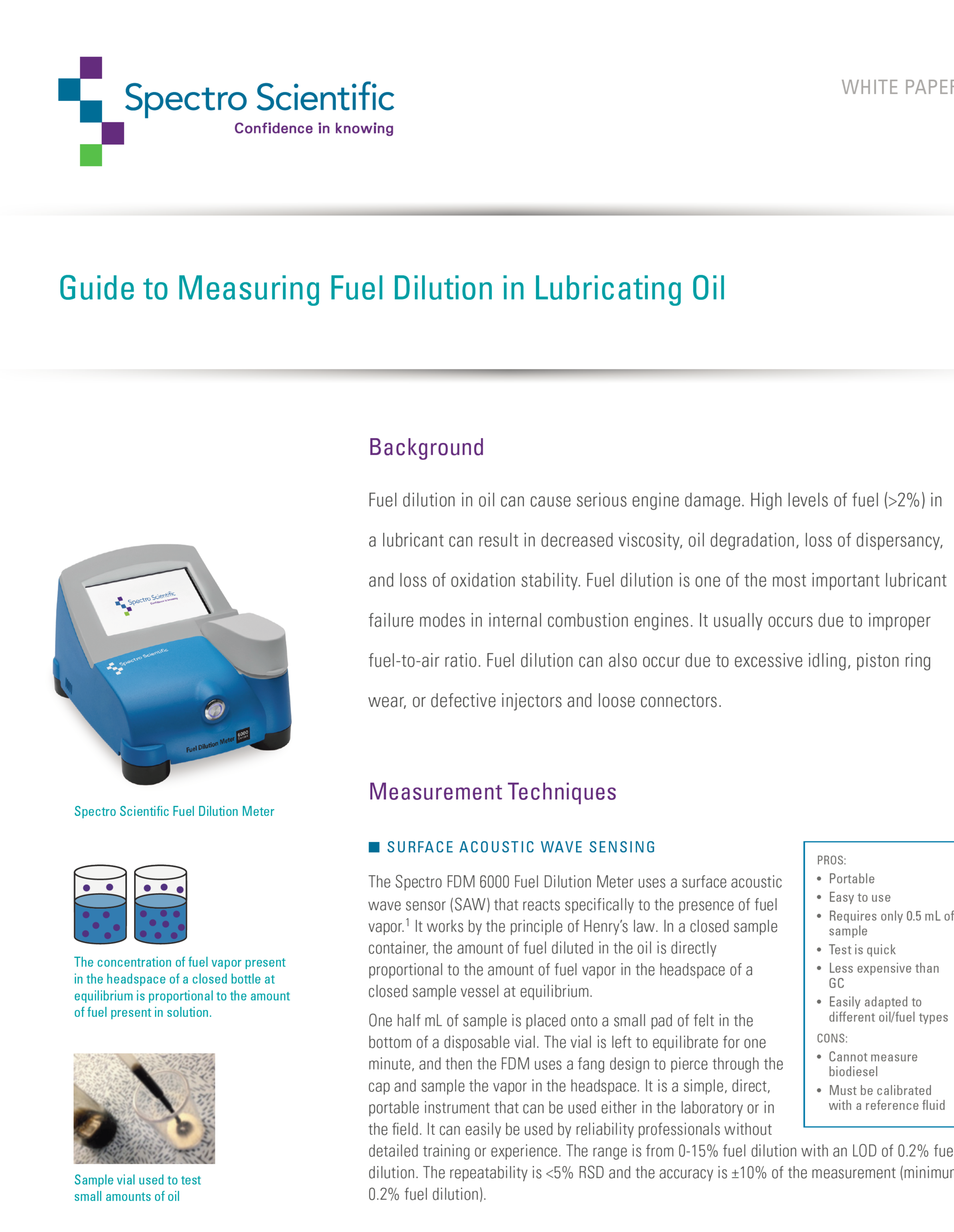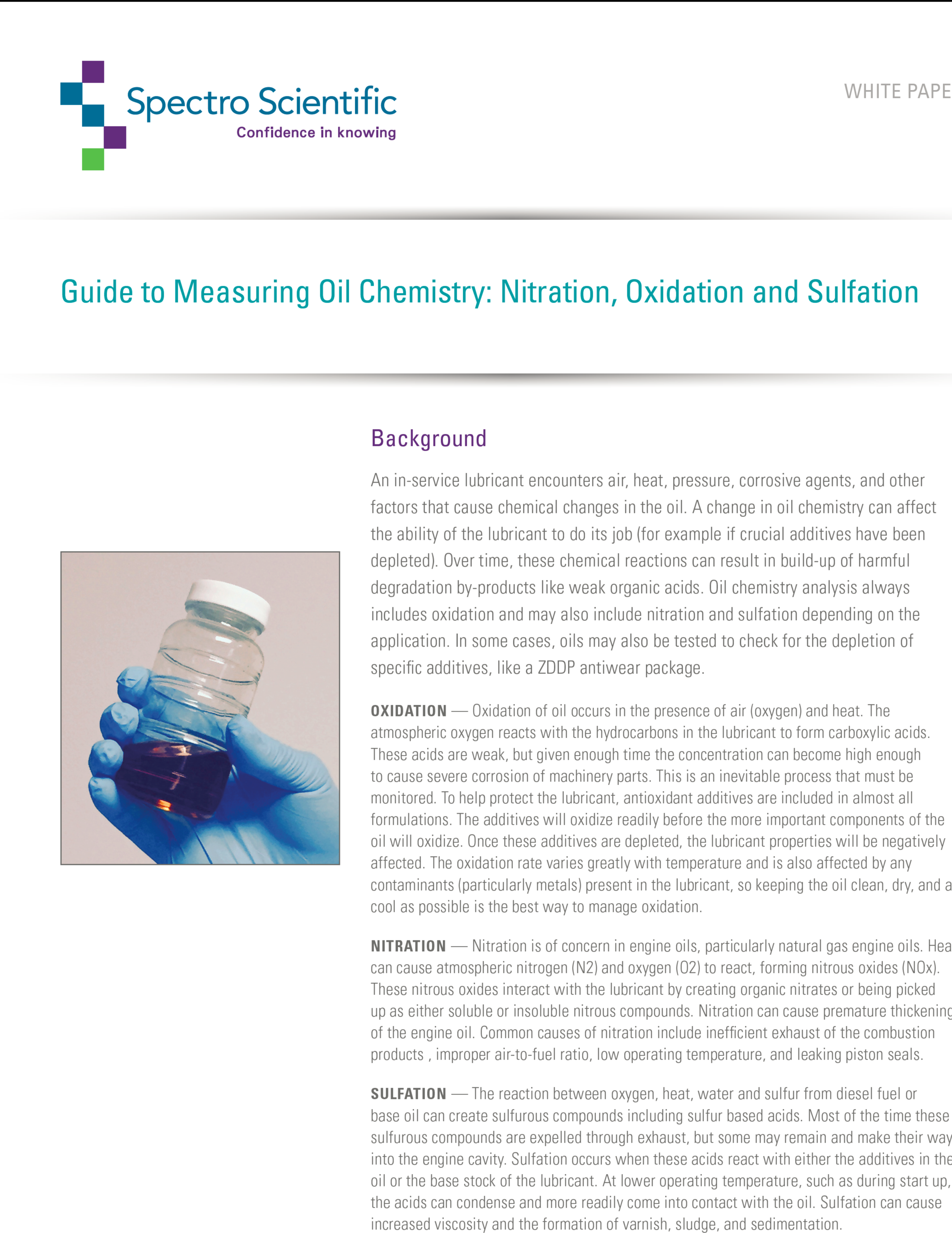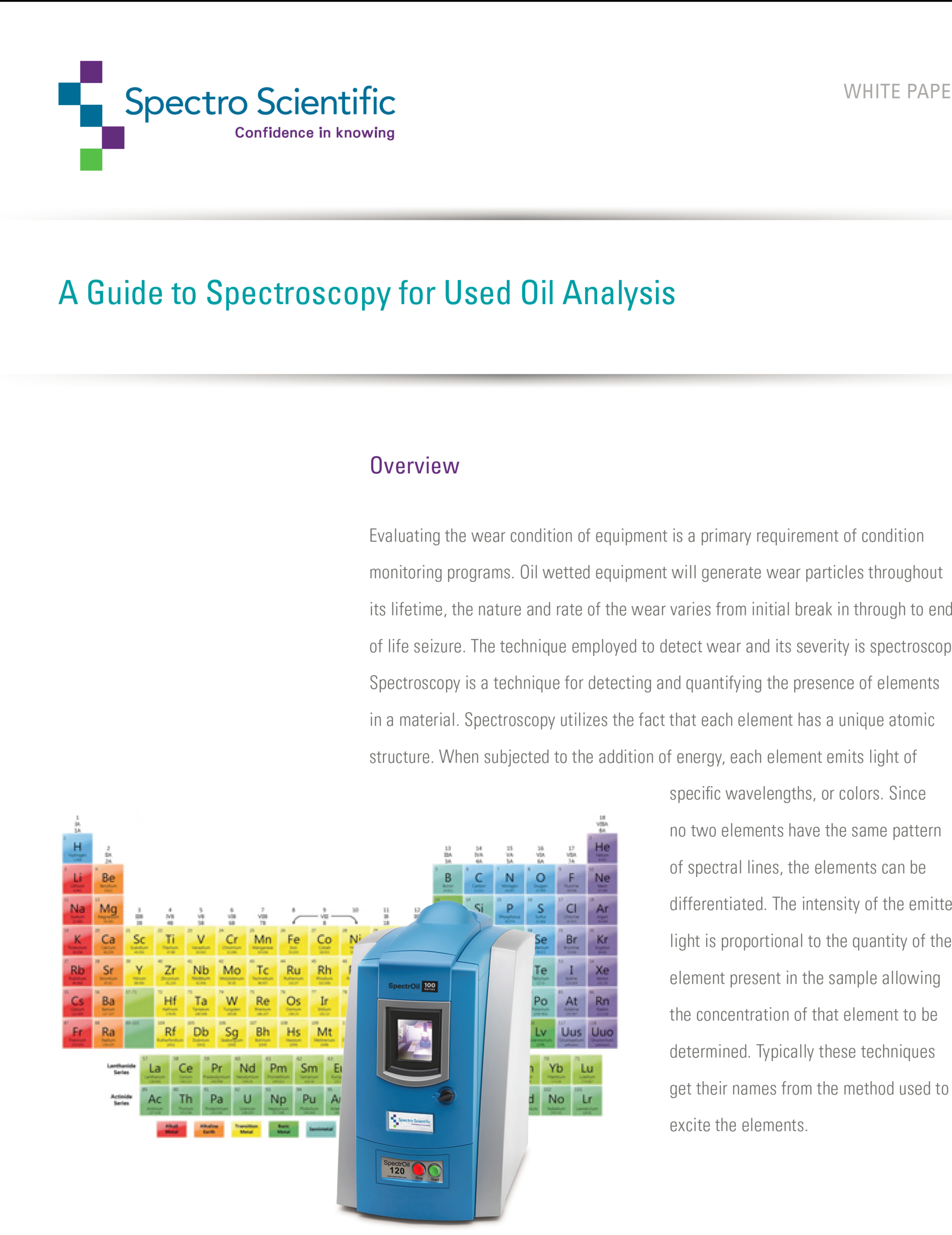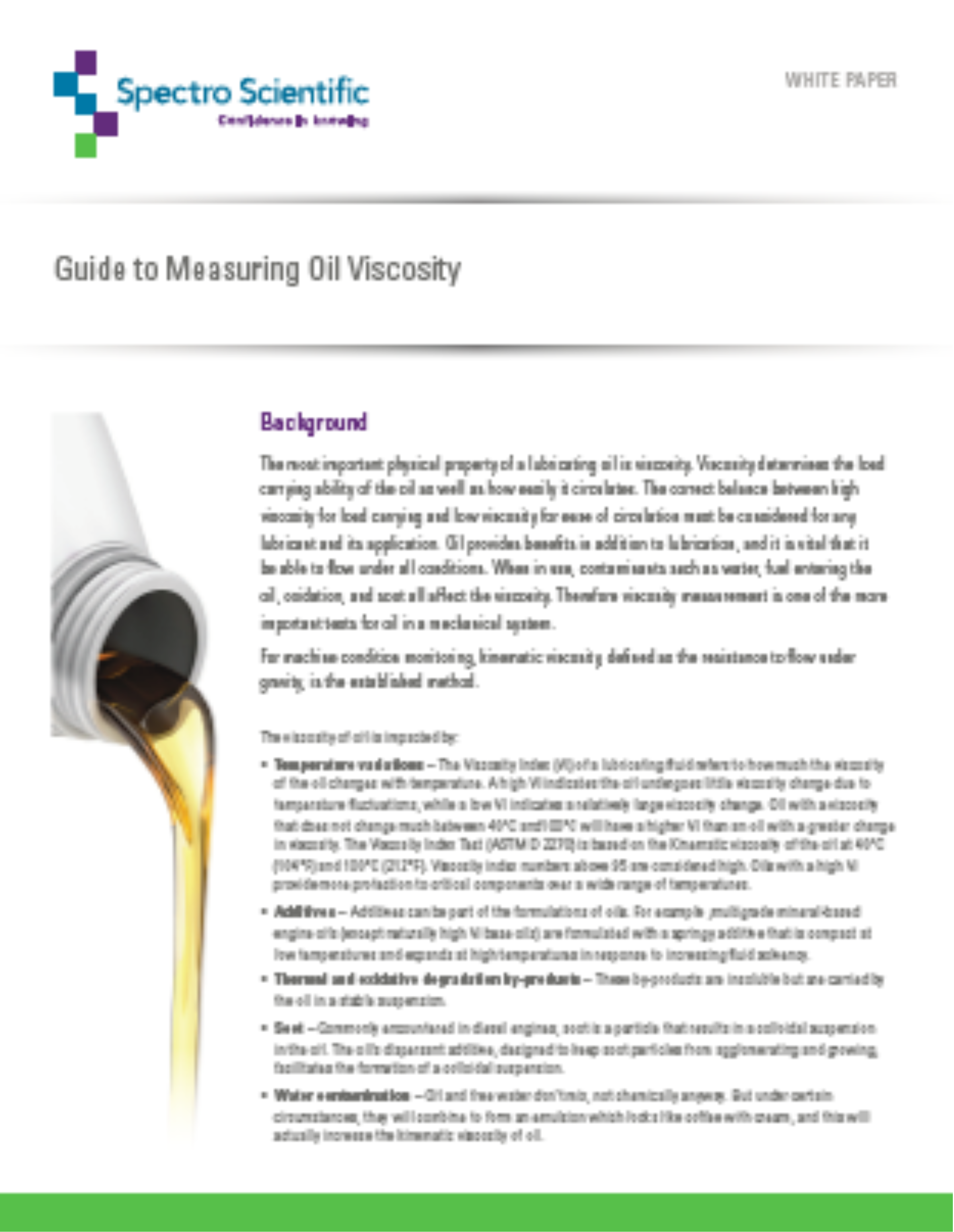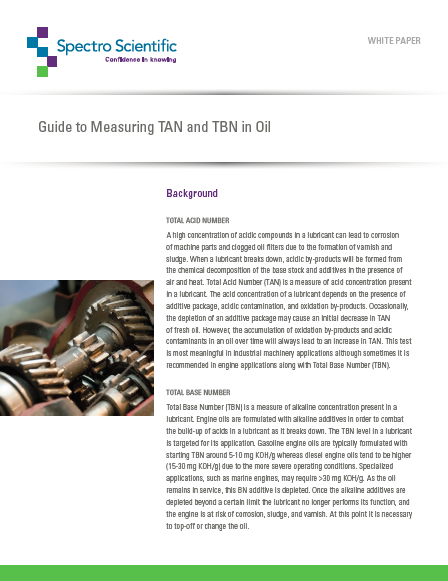The measurement and trending of abnormal ferrous wear debris in machinery lubrication oils is arguably the most significant indicator of machinery health and a key predictor of catastrophic machinery failure. There are several methods available to measure the ferrous content of lubrication oil.
Augustus Kaskons
Recent Posts
As the global commitment to renewable energy sources grows, the importance of using biodiesel as a blending component with diesel fuel has increased. Biodiesel consists of fatty acid methyl esters (FAME) which are produced by the transesterification of certain feedstock oils, such as soy, rapeseed, canola, and others. The biodiesel is then blended with diesel fuel at amounts required by the regulatory agencies of different countries. It is important for fuel terminals and distributors, as well as regulatory agencies, to check the concentration of biodiesel in the diesel fuel in order to make sure it is within these allowable limits. Diesel fuel with too little biodiesel will not meet renewable fuel standards and fuel with too much biodiesel may cause engine failures.
Since no engine is 100% efficient, products other than carbon dioxide and water will be formed during combustion. One such product produced from incomplete combustion is soot. Soot is a mass of mainly carbon particles that are typically spherical in shape. As soot levels rise, the soot particles begin to clump together and become more dangerous. The soot levels will continue to increase and the particles clump together until it reaches a level great enough to precipitate out of the oil. This precipitation will both increase the viscosity of the oil and attach itself to the engine surfaces which will significantly increase wear on the engine. This precipitation can also lead to filter plugging. Performing regular soot checks can realize cost savings by extending drain periods, reducing used oil disposal, and extending the life of diesel engines.
Guide for Measuring Fuel Dilution in Lubricating Oil
Fuel dilution in oil can cause serious engine damage. High levels of fuel (>2%) in a lubricant can result in decreased viscosity, oil degradation, loss of dispersancy, and loss of oxidation stability. Fuel dilution is one of the most important lubricant failure modes in internal combustion engines. It usually occurs due to improper fuel-to-air ratio. Fuel dilution can also occur due to excessive idling, piston ring wear, or defective injectors and loose connectors.
Measuring Oil Chemistry: Nitration, Oxidation, and Sulfation
An in-service lubricant encounters air, heat, pressure, corrosive agents, and other factors that cause chemical changes in the oil. A change in oil chemistry can affect the ability of the lubricant to do its job (for example if crucial additives have been depleted). Over time, these chemical reactions can result in build-up of harmful degradation by-products like weak organic acids. Oil chemistry analysis always includes oxidation and may also include nitration and sulfation depending on the application. In some cases, oils may also be tested to check for the depletion of specific additives, like a ZDDP antiwear package.
Evaluating the wear condition of equipment is a primary requirement of condition monitoring programs. Oil wetted equipment will generate wear particles throughout its lifetime, the nature and rate of the wear varies from initial break in through to end of life seizure. The technique employed to detect wear and its severity is spectroscopy. Spectroscopy is a technique for detecting and quantifying the presence of elements in a material. Spectroscopy utilizes the fact that each element has a unique atomic structure. When subjected to the addition of energy, each element emits light of specific wavelengths, or colors. Since no two elements have the same pattern of spectral lines, the elements can be differentiated. The intensity of the emitted light is proportional to the quantity of the element present in the sample allowing the concentration of that element to be determined. Typically these techniques get their names from the method used to excite the elements.
The most important physical property of a lubricating oil is viscosity. It determines the load carrying ability of the oil as well as how easily it circulates. The correct balance between high viscosity for load carrying and low viscosity for ease of circulation must be considered for any lubricant and its application. Oil provides benefits in addition to lubrication, and it is vital that it be able to flow under all conditions. When in use, contaminants such as water, fuel entering the oil, oxidation, and soot all affect the viscosity. Therefore viscosity measurement is one of the more important tests for oil in a mechanical system. For machine condition monitoring, kinematic viscosity, defined as the resistance to flow under gravity, is the established method.
Monitoring TAN and TBN is an important test for measuring lubricant condition. There
are several methods available ranging from expensive laboratory methods to quick field
tests. In a laboratory setting, methods are chosen based on the highest accuracy and
repeatability that can be achieved with a decent throughput. Out in the field, it is most
important to get a trustworthy result quickly enough that preventative or corrective
maintenance action can be taken before major equipment failure. The best method to
use depends on the application need.


